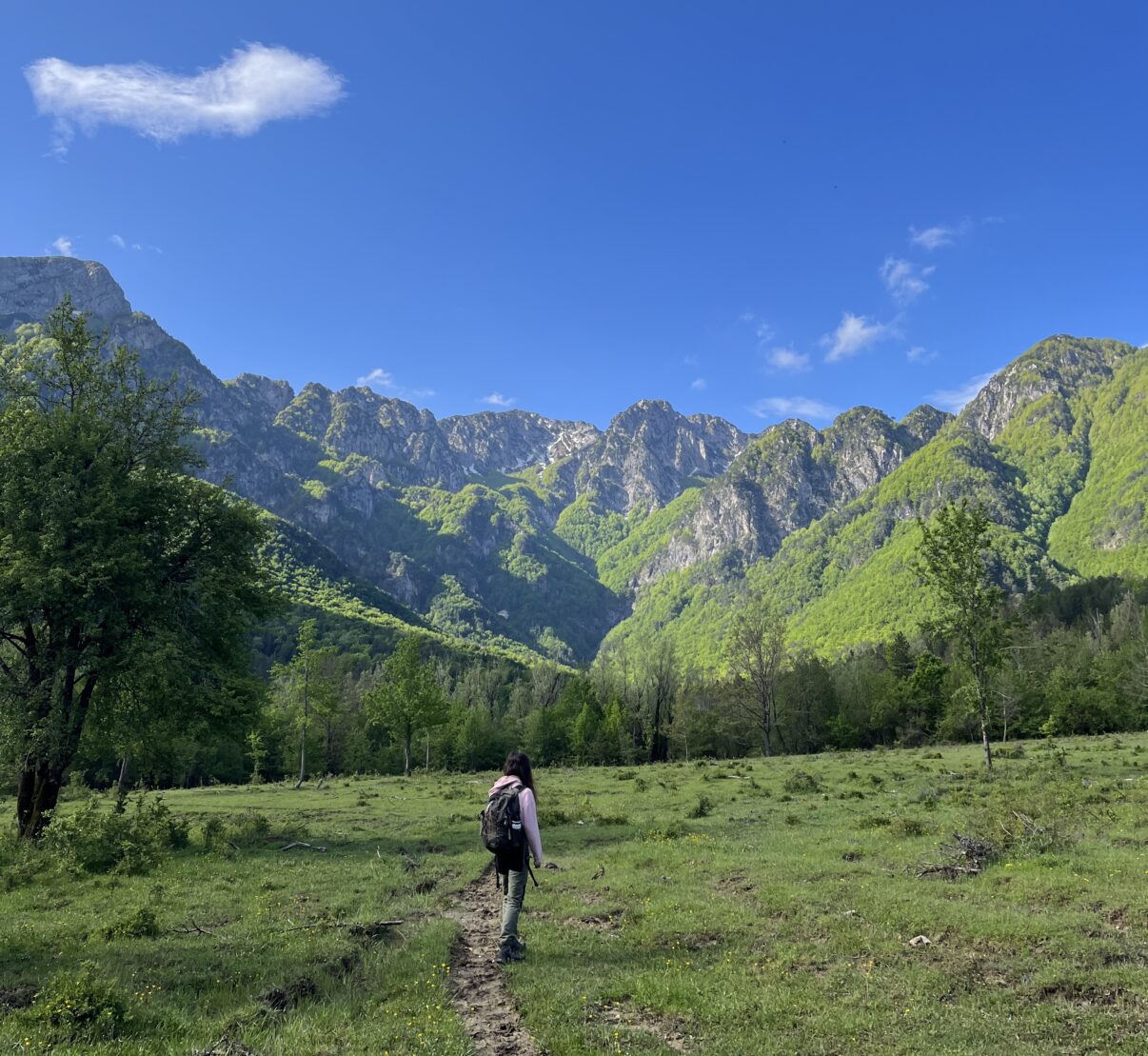
Giulia Testa is the coordinator of the European Young Rewilders. She has a background in Environmental Law and Policy and has been volunteering in youth political advocacy for biodiversity for two years. She is originally from Italy but has been living in Northern Europe since 2018, currently based in Sweden.
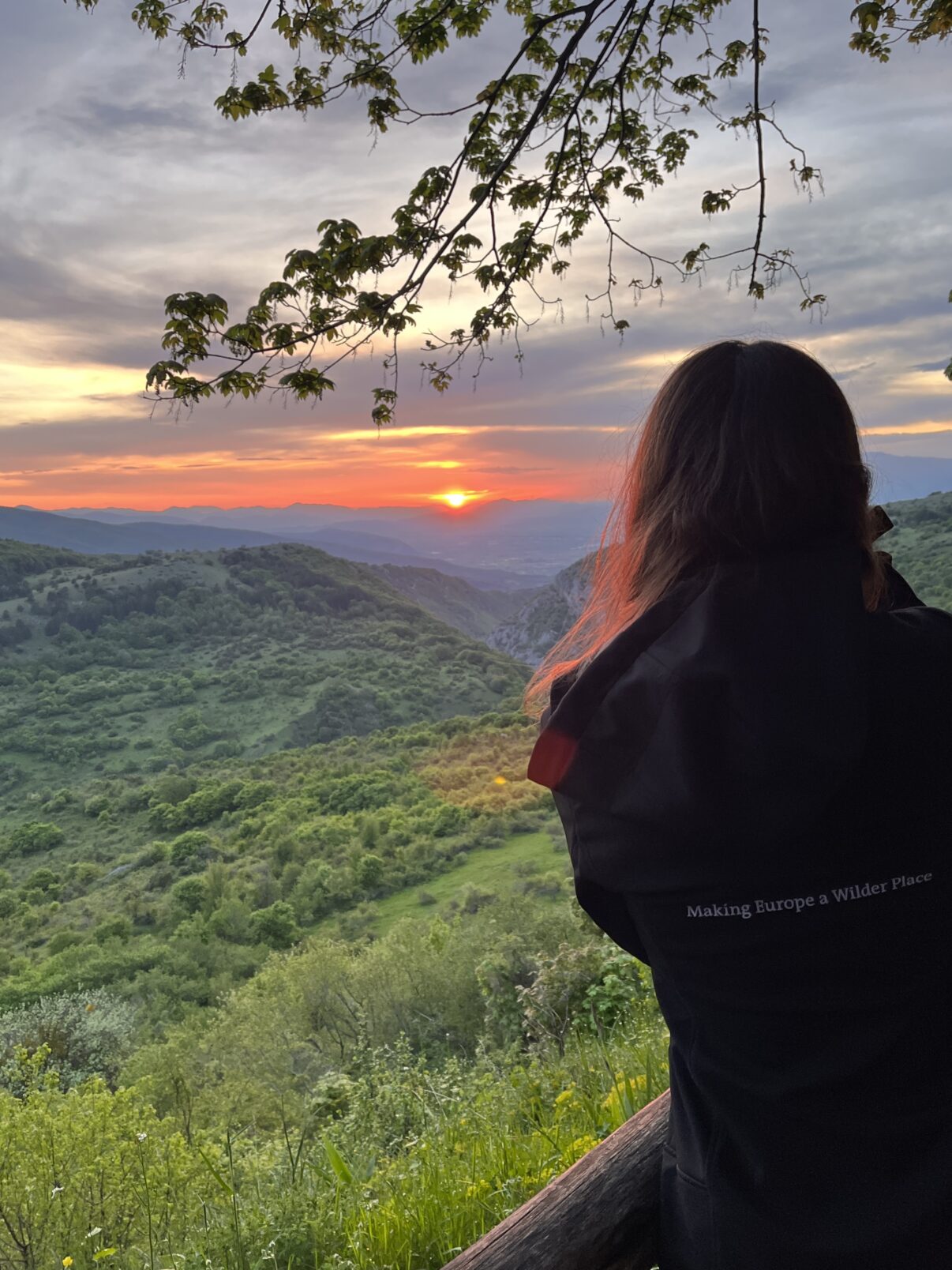
As a person with a background in environmental law and policy, nature conservation and restoration have mostly been written in textbooks and court cases. My actions were always behind a screen or a pen: advocating, facilitating, lobbying, and empowering others. I felt a desperate need to get on the ground and into the field, to see with my own eyes what I was protecting and to fill the naturalistic gap in my skillset.
And to do this, I went home. After searching for beauty and adventures abroad for years, I decided to explore my own country and spent two weeks in a village of 400 people in the Central Apennines volunteering for Rewilding Apennines.
My trip did not start in the best mood: I had to detour via Rome due to an unprecedented flood that devastated the region of Emilia-Romagna and I arrived just after the poisoning of a pack of wolves. Those two events made me contemplate how urgently we need to turn the tide, how much we need resilient ecosystems and how empathy is at the basis of coexistence. And I had not even arrived yet.
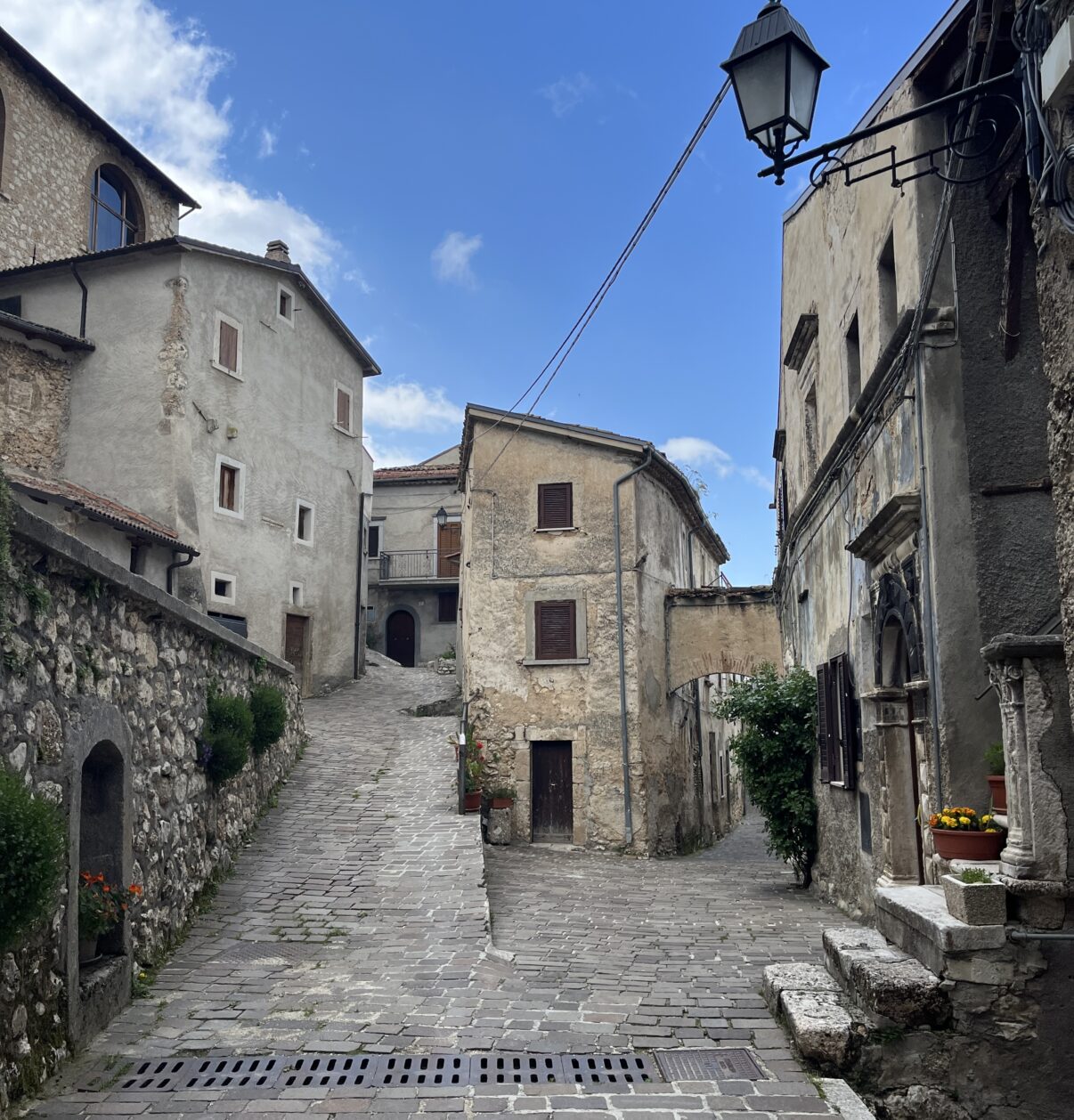
From day one, I felt warmly embraced by the team of Rewilding Apennines, Salviamo l’Orso, and by the other volunteers I was living with – in a beautiful old house in a town on a spur in between the mountains, Ortona dei Marsi. It was a Sunday, so we got the work plan for the following week. The plan assigns activities to volunteers based on manpower needs and proximity to relevant areas.
I quickly learned that there are recurrent and less common activities. One of the former ones kicked off my Monday: checking the GPS locations of the griffon vultures. A very important part of monitoring the conservation and habits of these animals is hiking to where the GPS tracker shows clustered activity and notes what was there. Normally there is (or there was) a carcass, we try to identify the species, whether it is domestic or not, and we check wildlife signs to know which species fed on it.

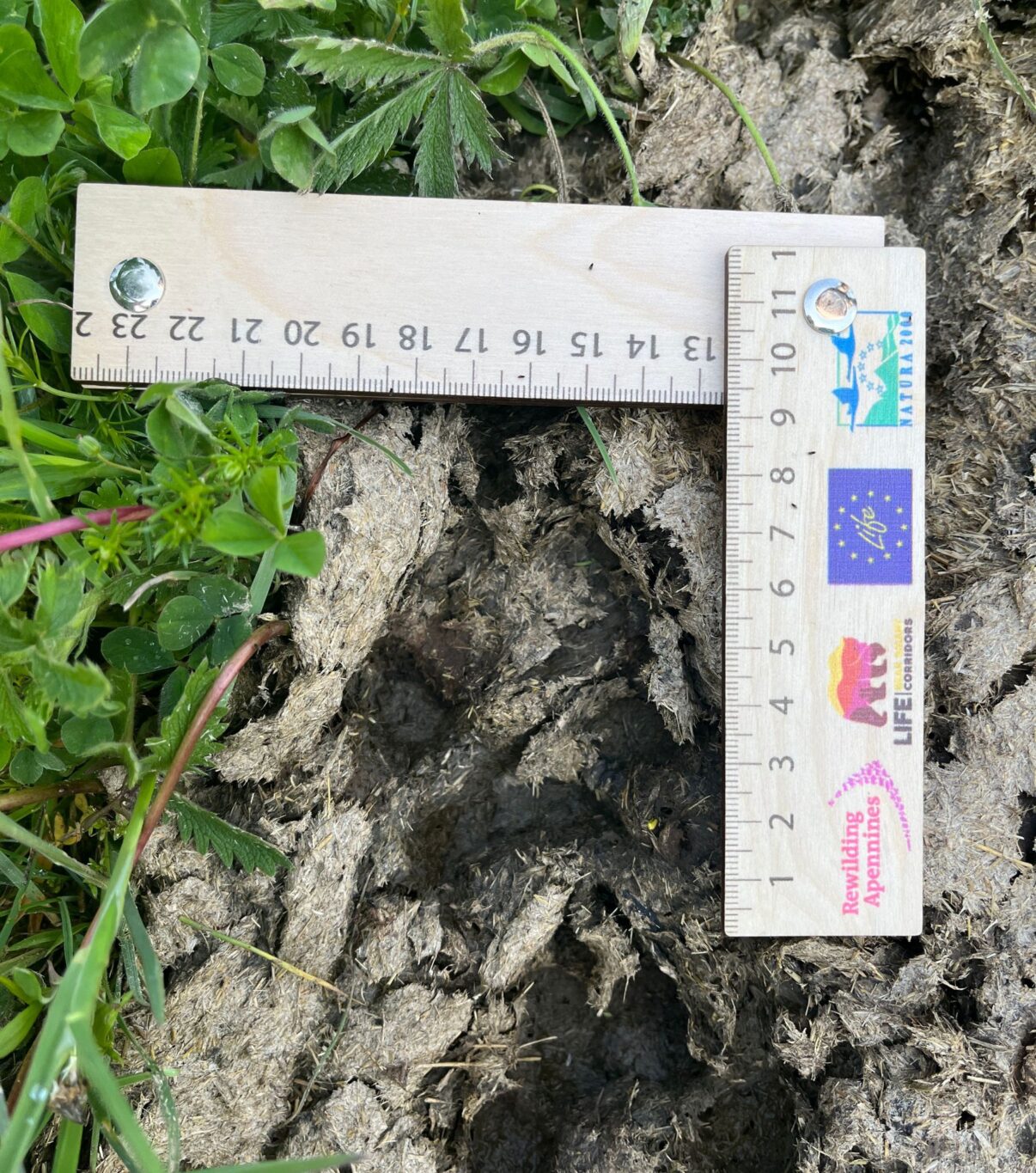
If the GPS clusters are too close to wind turbines it can be a problem, since a carcass there attracts the birds dangerously close to the blades and they risk to get hit. To examine this, we would inspect the area below them weekly for dead birds. We monitored the area around a horse carcass, which become a hotspot for necrophagous animals until most flesh had been consumed, leaving only unattractive scraps. Normally I cannot stand the sight of blood, even my own. However, I did not bat an eye in front of the carrion: it just felt so eye-opening to witness what the circle of life means, necrophagy is arguably the most under-considered ecological process.


Being so close to this humongous infrastructure, cutting the air above me, was very eerie. This experience left me with a realization, I have always underestimated the impact that “sustainable energy” can have on biodiversity. When it comes to vultures, Rewilding Apennines is also supporting the creation of feeding stations, which are places where farmers can dispose domestic carcasses safely and increase food availability for necrophagous birds.
Installation or maintenance of electric fences and bear-proof bins are other common activities. Reducing indirect conflict with predators is necessary for coexistence and it is making the Bear Smart Community a very successful model. During those weeks, not only did I learn how to recognize wildlife tracks, spot and identify animals, and use a telescope – but also how to drill, trim grass and pour cement.
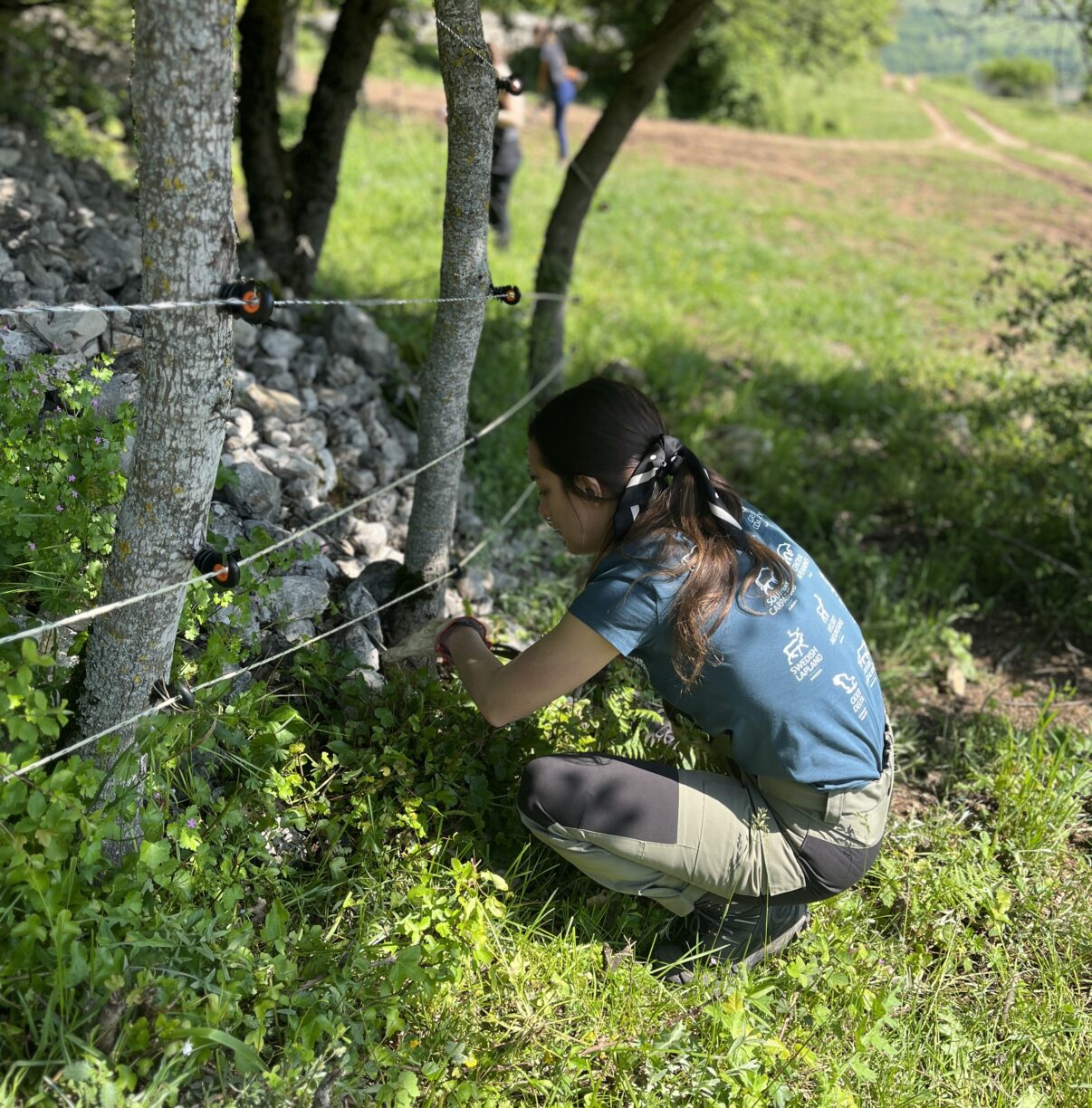
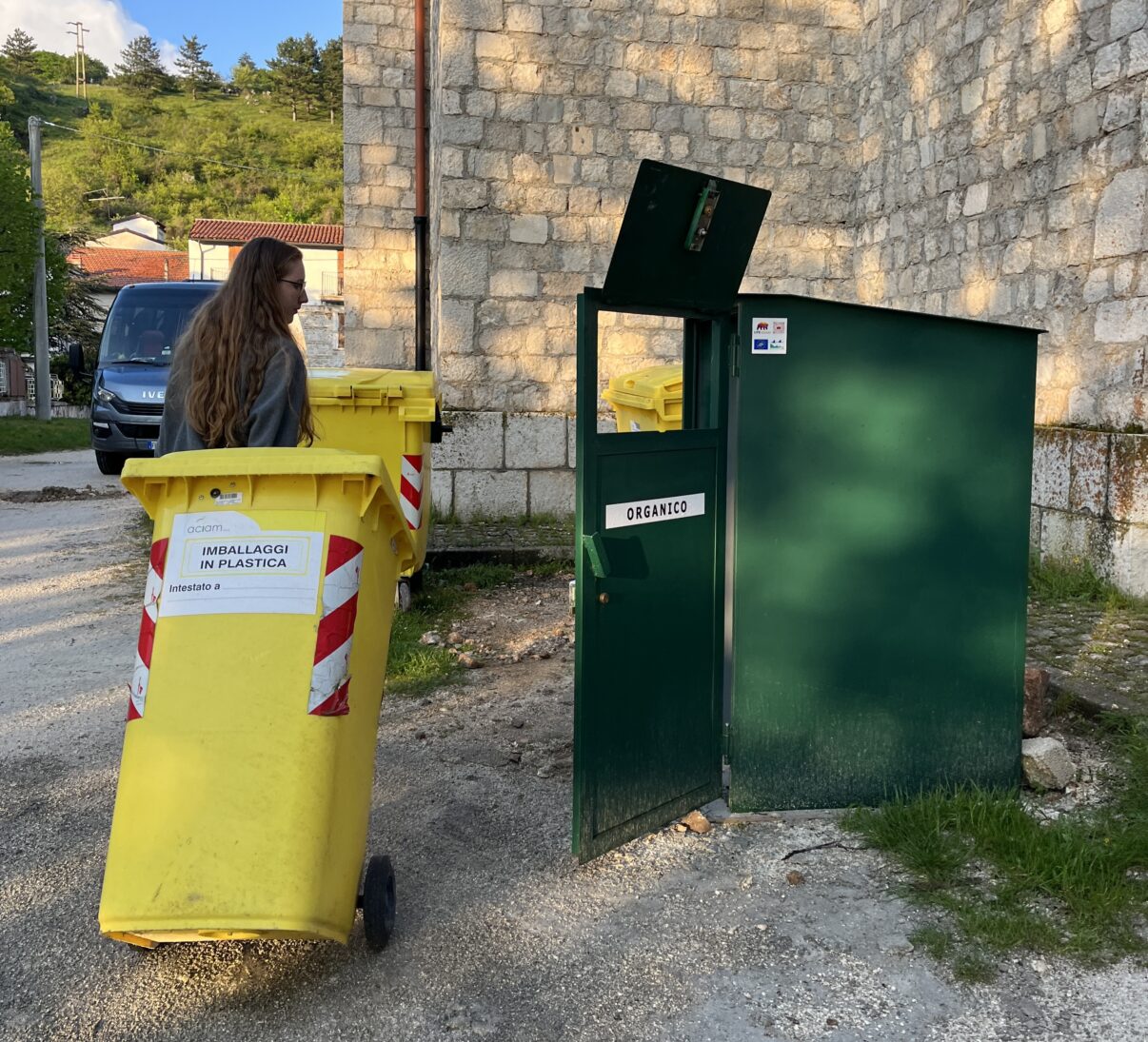
Setting up camera traps and analyzing data was enjoyable beyond my expectations. We check the surroundings and study the trails left by animals, in order to pick the perfect position for the device. Going through the footage (after a couple of weeks) is vital to monitor the ecological corridors, but also very interesting to see animals engaging in activities we do not normally see and study their habits.

Among other activities, I helped to collect data (size, depth, quality, location) on ponds and other water sources for the project DropByDrop and I joined some external events held by Rewilding Apennines. Gloves and goggles on, we also removed 400 meters of barbed wire. These obsolete and harmful fences are a real threat to wildlife (and to yourself, if you do not have a tetanus vaccination) and extremely tiring to remove. We had to cut and roll rusty and spiky metal into big wheels, sometimes even pulling it out of the ground, and pushing it up or down to the closest pick-up point. However, the gratification of having removed something harmful from the environment permanently paid off any effort.
And then there are wildlife observations. In the midst of the whirlwind of all the daily actions, the most magical part of the day for me was in the evening, when we would grab the binoculars and just wait. Standing at the natural terrace of Gioia Vecchio with the full valley on display, with the sunset changing the colors of the landscape and the melody of birds filling up my ears. Or even just sipping coffee on the balcony waiting for the usual pack of wolves to show up, or keeping my eyes fix outside of the windows during car drives at dusk. Is it a rock… or maybe a bush? No, wait – it is moving. It is dark, is it a bear – or a wild boar? That one is slim, running and disappearing after a couple of seconds. Probably a fox, but what if it was a pine marten or even a wildcat?

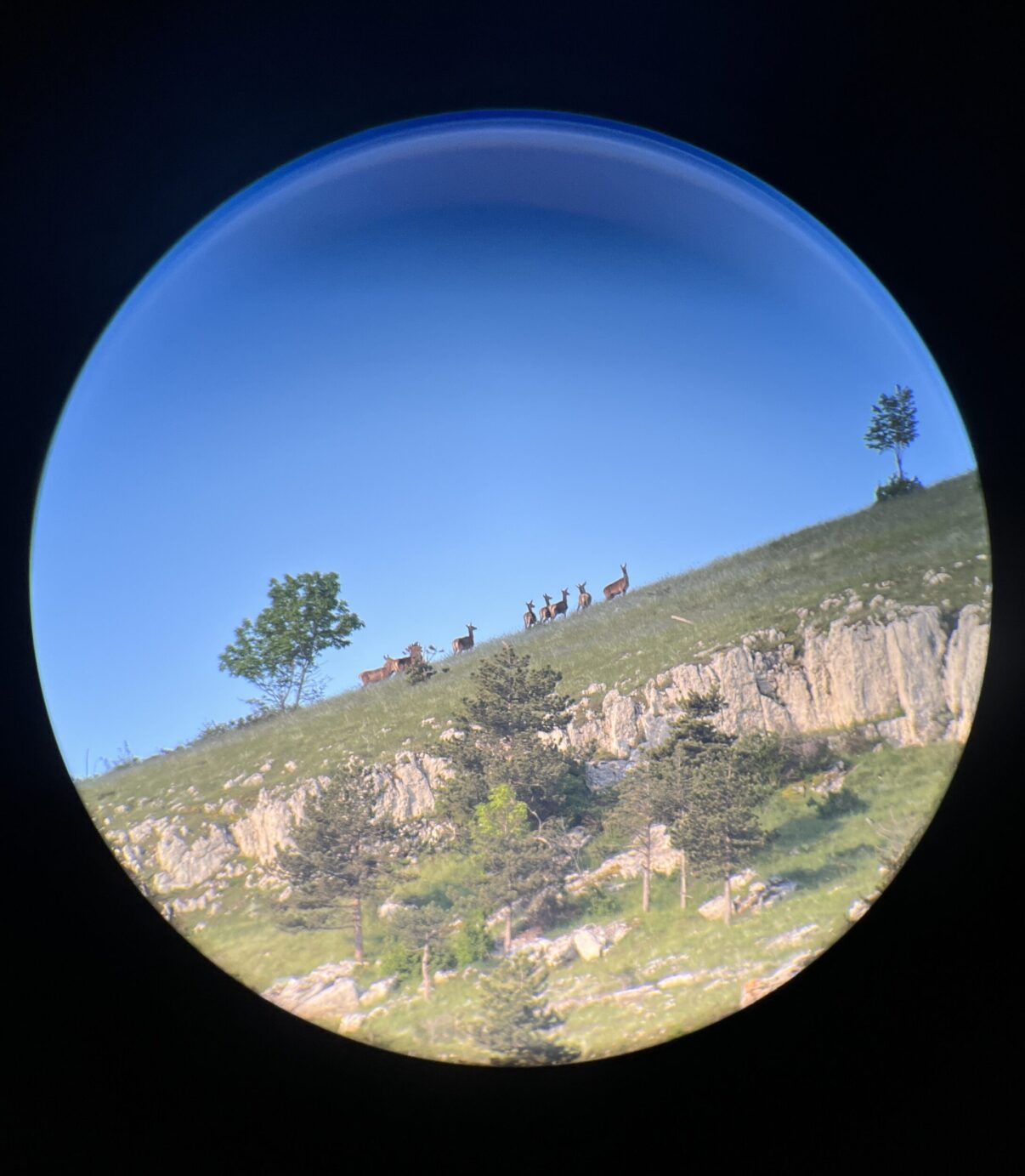

One night we were driving back to our accommodation and we saw a male red deer on the road. We stopped the car, but the stag felt trapped by the lack of escape routes (a rocky wall on one side of the road, a cliff on the other). So he started to gallop towards us, a silver figure lit up by our headlights in the darkness – it felt like a dream. He stopped and leaned forward with antlers facing the front of the car. We turned off the beams and that was enough for him to declassify us as a threat, before running away.
On my second day, I saw two bears that even initiated a mating encounter in front of us. By the time I left Italy, I had seen wolves, other bears, foxes, vultures and more deer than I have ever seen in my entire life. Experiencing such a wealth of wildlife felt problematically unreal. I wondered: how have we come to consider animals that 200 years ago were roaming everywhere almost mythical? When did we normalize an empty nature, to the point of considering it exceptional to see a mammal in the wild? The shifting baseline syndrome is real. Let’s bring our standards back to what is ecologically normal. How can it be radical to want predators and normal to live without keystone species? While we go on safaris in Africa to take pictures with charismatic animals, our amazing European fauna is undervalued, not advocated for and dying from our indifference.
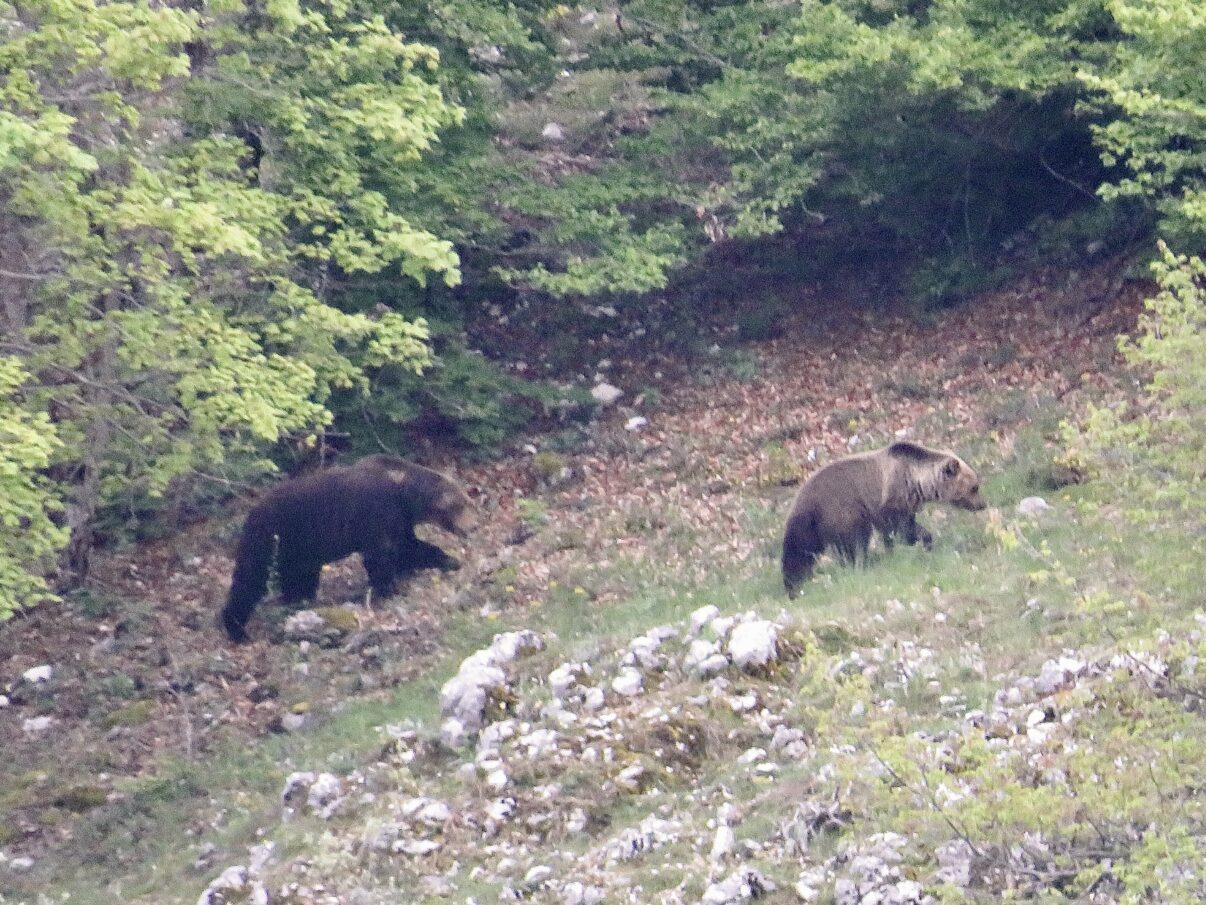
A particularly thought-provoking encounter was that of a wolf chilling in front of a line of bypassing deer, less than 10 meters away. He could not care less about their presence: animals do not kill unless there is a reason and are worth the energy they invest in it. At some point, we decided that the animal we picked to make it our companion (and which according to legend, raised the founders of Rome) was going to be the villain of our stories. It is time to see the wolf for what it is: a shy animal with widely studied and predictable ethology – not an indiscriminate killer. While we wrap our heads around the obvious and carry out witchhunts, wolves come back and walk around us, giving us a key lesson in resilience and adaptability.
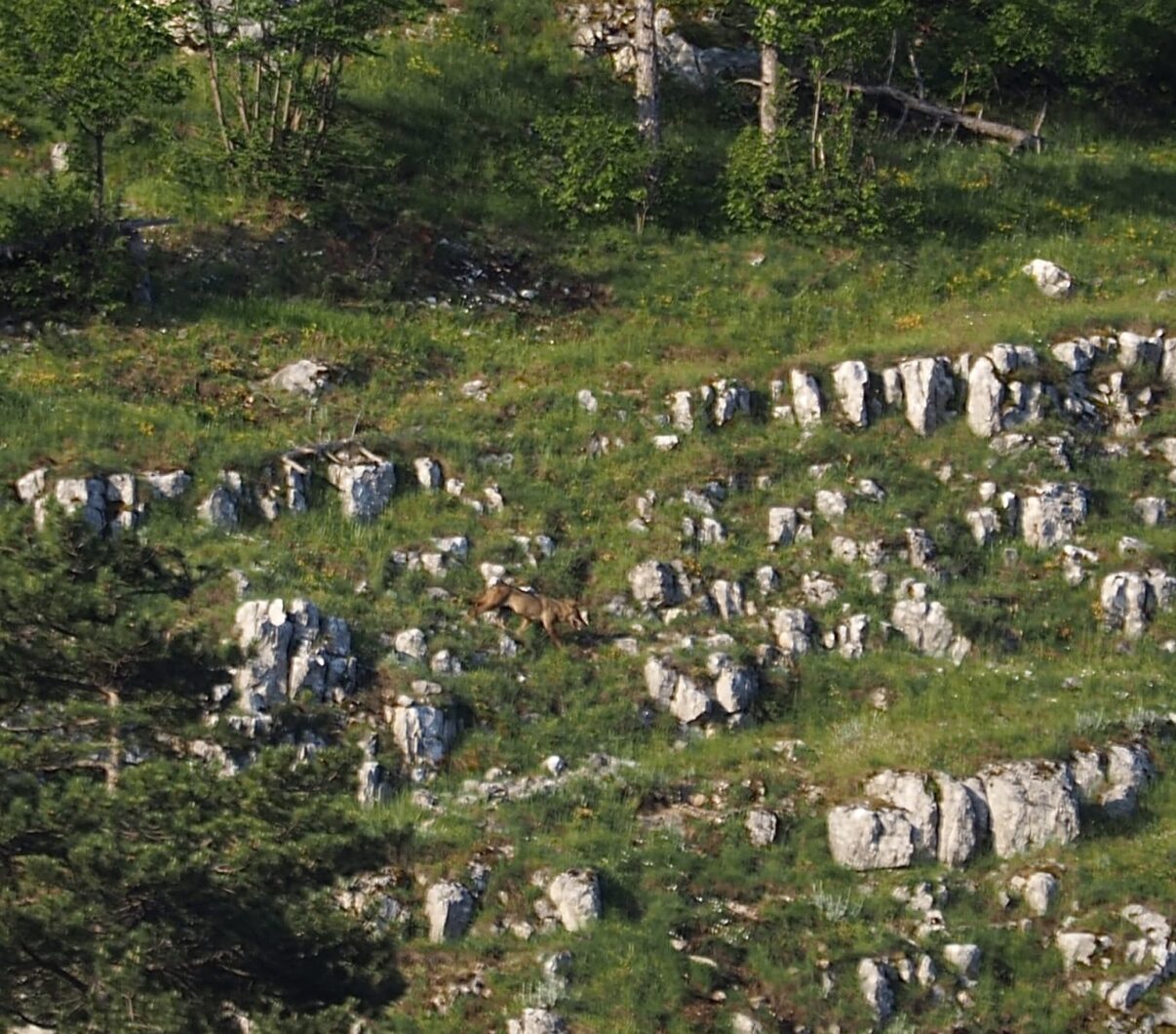
I have hiked countless places, against all the odds given my poor stamina. While I was always up in the mountains, this experience has also put me down to Earth. It grounded me to my country, to the challenges, and to what the rewilding movement is doing. I was surrounded by amazing people that made every single second fun, on or off the field! I will treasure the memory of going horse riding on the weekend. People always do make a difference. I felt so inspired and hopeful to see how strenuously and passionately my Italian colleagues work for a wilder Italy. I have been abroad too much, I have not given enough credit to my own country. We are 60 million people sharing a tiny country with thousands of large predators, and this is possible thanks to every Italian standing up for a wilder future.
